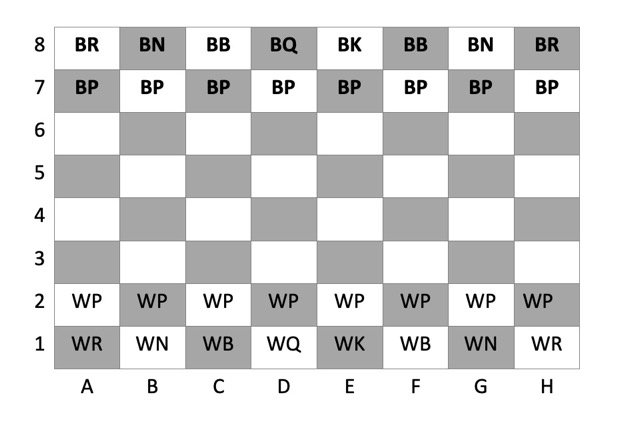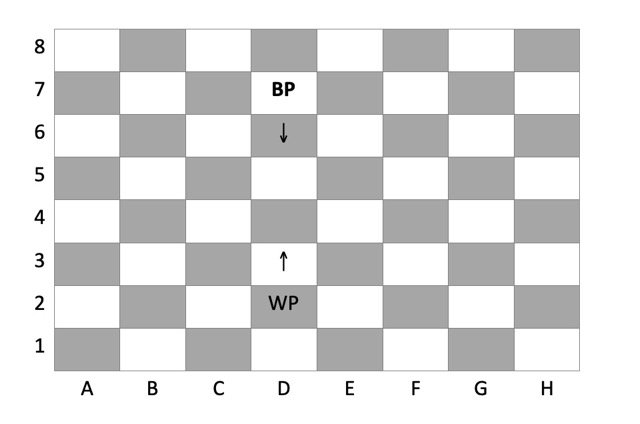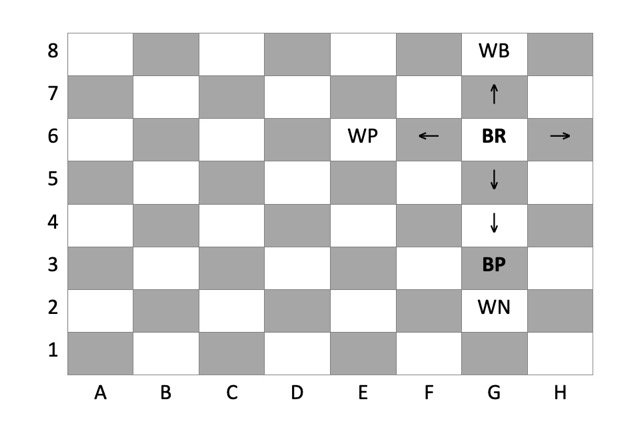Last Updated on January 25, 2024 by Gamesver Team and JC Franco
The chessboard can be intimidating despite looking like a kitchen floor. Those 64 black-and-white squares are an intellectual battleground. But once the basics are memorized, playing beginner games online or with a patient friend becomes much easier.
The basic things you need to know for chess are how to set up the board and move the pieces. Once these are memorized, you can work on strategy. Also, you must never touch a piece unless you intend to move it (no takebacks), and you are not allowed to put your King into check.
Learning chess strategies, openings, endings, and other tricks is fun. But before you dive into trying to outwit opponents, get a firm grasp on the fundamentals.
These are 25 basic things you need to know to play chess:
1. The Chess Board Is 8 Squares X 8 Squares
The chess board comprises 64 squares: eight rows going up and eight across. The columns have letters, and the rows have numbers. See below:

Thus, square A1 is the dark square in the bottom left corner. Square H8 is the dark square in the upper right.
2. Chess Players Are Divided By Black And White
Chess pieces come in two colors. Traditionally these are black and white, although some novelty boards will use other colors. For our guide, we’re sticking with tradition.
3. Each Chess Player Begins With 16 Game Pieces
Each chess player will begin with a total of sixteen game pieces. Below are their names, their abbreviation, and how many of each piece a player has at the start of the game.
- Pawns (P) – 8 pieces
- Rook (R) – 2 pieces
- Knight (N) – 2 pieces
- Bishop (B) – 2 pieces
- Queen (Q) – 1 piece
- King (K) – 1 piece
4. Chess Boards Are Set Up The Same Way Every Time
Chess boards are set up the same way every time. So while the game is creative, it isn’t at the start.
Thus, the white player sets up in rows 1 and 2. The black player sets up on rows 7 and 8. These sides mirror each other.
- Rows 2 and 7 will have each player’s Pawns (P).
- Rows 1 and 8 will have the pieces set out as follows:
- Rook (R), Knight (N), Bishop (B), Queen (Q), King (K), Bishop (B), Knight (N), Rook (R).

5. In Chess, The Queen Begins On Her Color’s Square
Once the board is set up, each player should have their Queen on her color:
- White Queen is on a white square, D1
- Black Queen is on a black square, D8
6. Chess Players Move One At A Time
Chess players move a piece one at a time, taking turns. A player is not allowed to skip.
7. Chess: You Touch It; You Move It
Players are obliged to move a piece if they touch it. So keep your hands to yourself until you are ready to move.
If a player needs to adjust a piece, they must first say, “I adjust,” or “J’adoube,” or the meaning of “I adjust” in their language before touching the piece.
8. How A Pawn Moves In Chess
Pawns move one square at a time. They only move forward.

However, if a pawn hasn’t moved yet, it can make its first move two squares forward. Thus, White Pawns can move from row 2 up to row 4 on their first move if both squares are open. (This isn’t checkers, no hopping.) Black Pawns can move from rows 7 to 5 on their first move if both squares are open.

9. How A Pawn Captures An Opponent’s Piece In Chess
Pawns capture an opponent’s piece by moving one square diagonally forward.
For example, the Black Pawn sitting on B6 can capture a piece sitting on A5 or C5. The White Pawn sitting on F3 can capture a piece sitting on E4 or G4.

10. How A Rook Moves In Chess
Rooks are nicknamed “Castles” and move across the board in straight lines, forwards and back. They can go up a column or across a row, stopping when the player chooses, is blocked, or when capturing a piece.
For example, the Black Rook on G6 can move up and down column G and across on row 6. The White Rook on C4 can move up and down on column C and across on row 4.

11. How A Rook Captures An Opponent’s Piece In Chess
A Rook can capture a piece by taking its square.
For example, the Black Rook on G6 could take the White Bishop on G8 and White Pawn on E6. However, the Black Rook can’t take the White Knight on G2 because the path is blocked by the Black Pawn on G3.

12. How A Knight Moves In Chess
The Knight’s movement looks like an L: two spaces in one direction, then to the left or right. See the example below where X marks the White Knight’s potential “landing” place.

13. Knights Can Jump In Chess
Knights can jump when moving; the only piece allowed to do so.
14. How A Knight Captures An Opponent’s Piece In Chess
Knights capture the opponent’s piece by landing on the occupied square. Thus, any spot marked with an X in the example is a “danger square” for the opponent.

15. How A Bishop Moves In Chess
Bishops move diagonally across the board, stopping when the player chooses, is blocked, or when capturing a piece. See below where the X marks potential moves for the White Bishop.

16. How A How Bishop Captures An Opponent’s Piece In Chess
A Bishop captures an opponent’s piece by taking its square. Thus, any spot marked with an X in the example is a “danger square” for the opponent.

17. How A Queen Moves In Chess
The Queen is the strongest piece, moving forwards, back, and diagonally. However, she can’t jump and can only move in one direction at a time. But she can move as far as she likes, or until blocked, capturing an opponent’s piece, or when the player chooses to stop her.
See below for an example of the White Queen’s potential paths.

18. How A How Queen Captures An Opponent’s Piece In Chess
A Queen captures a piece by moving into its square. For example, the White Queen featured below on D4 can take the Black Pawn on D7, but she can’t take the Black Knight on G4 because there is a White Pawn blocking her on F4.

19. How A King Moves In Chess
A King can be moved a single square in any direction.

20. How A King Captures An Opponent’s Piece In Chess
A King captures a piece by moving into an opponent’s square. For example, the White King on D4 could capture the Black Pawn on D5.

21. In Chess, Say “Check” If The Opponent’s King Is In Danger
You say “Check” when you can capture the opponent’s King on your next move.
22. A King Can’t Move Into Check
It is illegal in chess to move your King into check. In short, your King can’t kill himself. Thus, in the example below, the White King can’t move into D5 or C4 due to the Black Bishop.

23. “Checkmate” Equals A Win
You say, “Checkmate,” when you’ve trapped the opponent’s King, and there is no way to move him out of peril. In short, you won.
24. The First Move Should Be A Pawn
Generally, you make your first move with a pawn.
25. Look Over The Whole Board
When playing, take the whole board into consideration. Don’t eagerly capture an opponent’s piece before considering if it is a trap. Take your time, and consider all angles. The more familiar you become with the chess pieces’ unique movements, the easier it will be to find the traps.
In Closing
Learning to play chess takes time but can be greatly rewarding. But before you can have fun, you need to learn how the pieces move.

